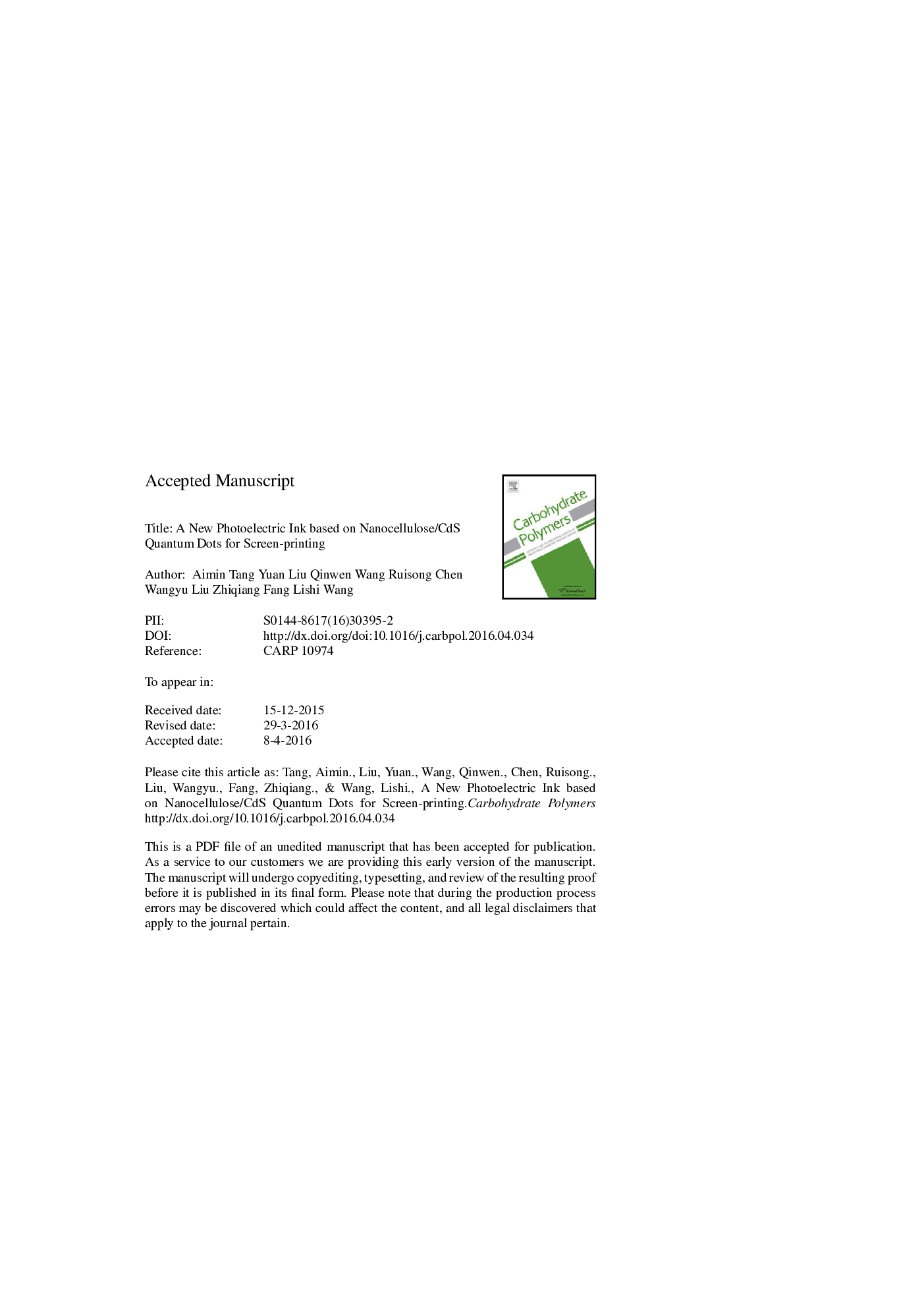| Article ID | Journal | Published Year | Pages | File Type |
|---|---|---|---|---|
| 7785556 | Carbohydrate Polymers | 2016 | 17 Pages |
Abstract
CdS quantum dots with excellent photoelectrical properties embedded in nanocellulose could be exploited for use in photoelectrical ink. In this work, nanocellulose/CdS quantum dot composites were fabricated by controlling the carboxylate content of the nanocellulose and the molar ratio of Cd2+/-COOH. New photoelectric inks were prepared based on the composites, in which the CdS quantum dots acted as the pigment and the nanocellulose as the binder. The results of the photocurrent of the composites showed that the photocurrent could be tailored by the carboxylate content and the molar ratio of Cd2+/-COOH. And the photocurrent could be as high as 2 μA. The surface tension of the photoelectric ink was 27.80 ± 0.03 mN/m and its viscosity was 30.3 mPa s. The photoelectric ink was stable with excellent fluidity and rheology, it could therefore be applied to screen-printing and three-dimensional (3D) printing.
Related Topics
Physical Sciences and Engineering
Chemistry
Organic Chemistry
Authors
Aimin Tang, Yuan Liu, Qinwen Wang, Ruisong Chen, Wangyu Liu, Zhiqiang Fang, Lishi Wang,
